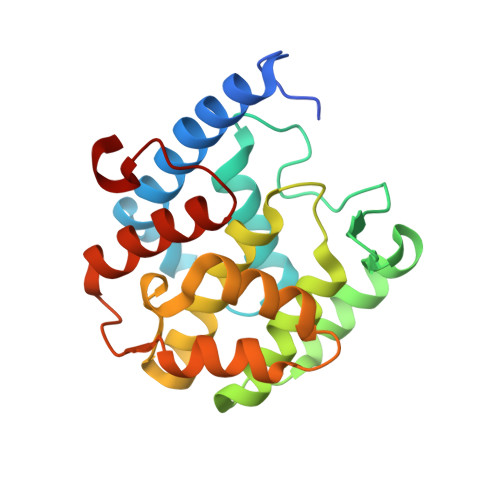A Ca2+-regulated deAMPylation switch in human and bacterial FIC proteins.
Veyron, S., Oliva, G., Rolando, M., Buchrieser, C., Peyroche, G., Cherfils, J.(2019) Nat Commun 10: 1142-1142
- PubMed: 30850593
- DOI: https://doi.org/10.1038/s41467-019-09023-1
- Primary Citation of Related Structures:
5NV5, 5NWF, 6EP0, 6EP2, 6EP5, 6ER8, 6ERB - PubMed Abstract:
FIC proteins regulate molecular processes from bacteria to humans by catalyzing post-translational modifications (PTM), the most frequent being the addition of AMP or AMPylation. In many AMPylating FIC proteins, a structurally conserved glutamate represses AMPylation and, in mammalian FICD, also supports deAMPylation of BiP/GRP78, a key chaperone of the unfolded protein response. Currently, a direct signal regulating these FIC proteins has not been identified. Here, we use X-ray crystallography and in vitro PTM assays to address this question. We discover that Enterococcus faecalis FIC (EfFIC) catalyzes both AMPylation and deAMPylation and that the glutamate implements a multi-position metal switch whereby Mg 2+ and Ca 2+ control AMPylation and deAMPylation differentially without a conformational change. Remarkably, Ca 2+ concentration also tunes deAMPylation of BiP by human FICD. Our results suggest that the conserved glutamate is a signature of AMPylation/deAMPylation FIC bifunctionality and identify metal ions as diffusible signals that regulate such FIC proteins directly.
Organizational Affiliation:
CNRS and Ecole normale supérieure Paris-Saclay, Laboratoire de Biologie et Pharmacologie Appliquée, 61 Avenue du Président Wilson, 94235, Cachan CEDEX, France.

















